7 August - 12 September
No Fruit Forbidden:
Alex Schmitz
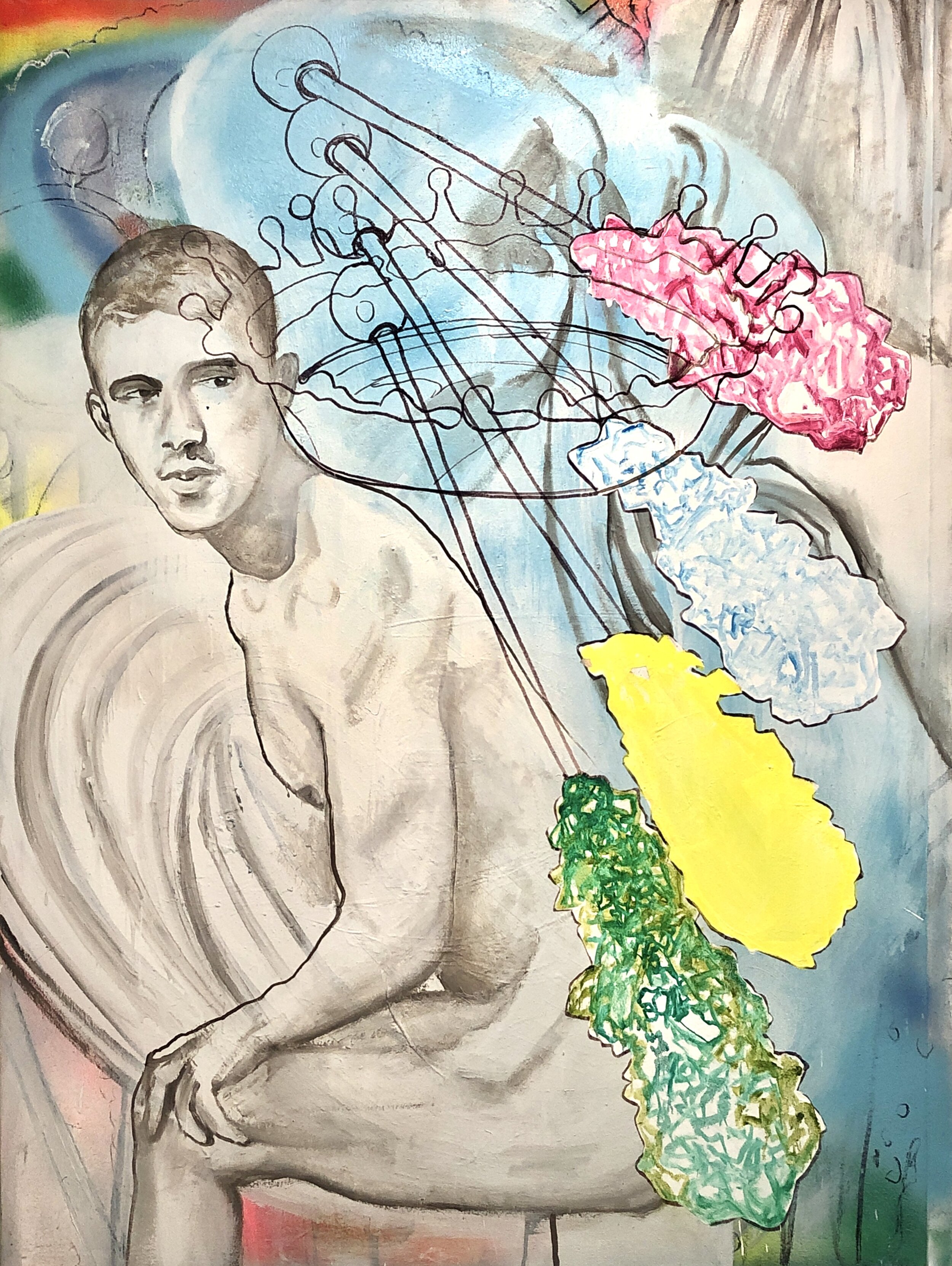
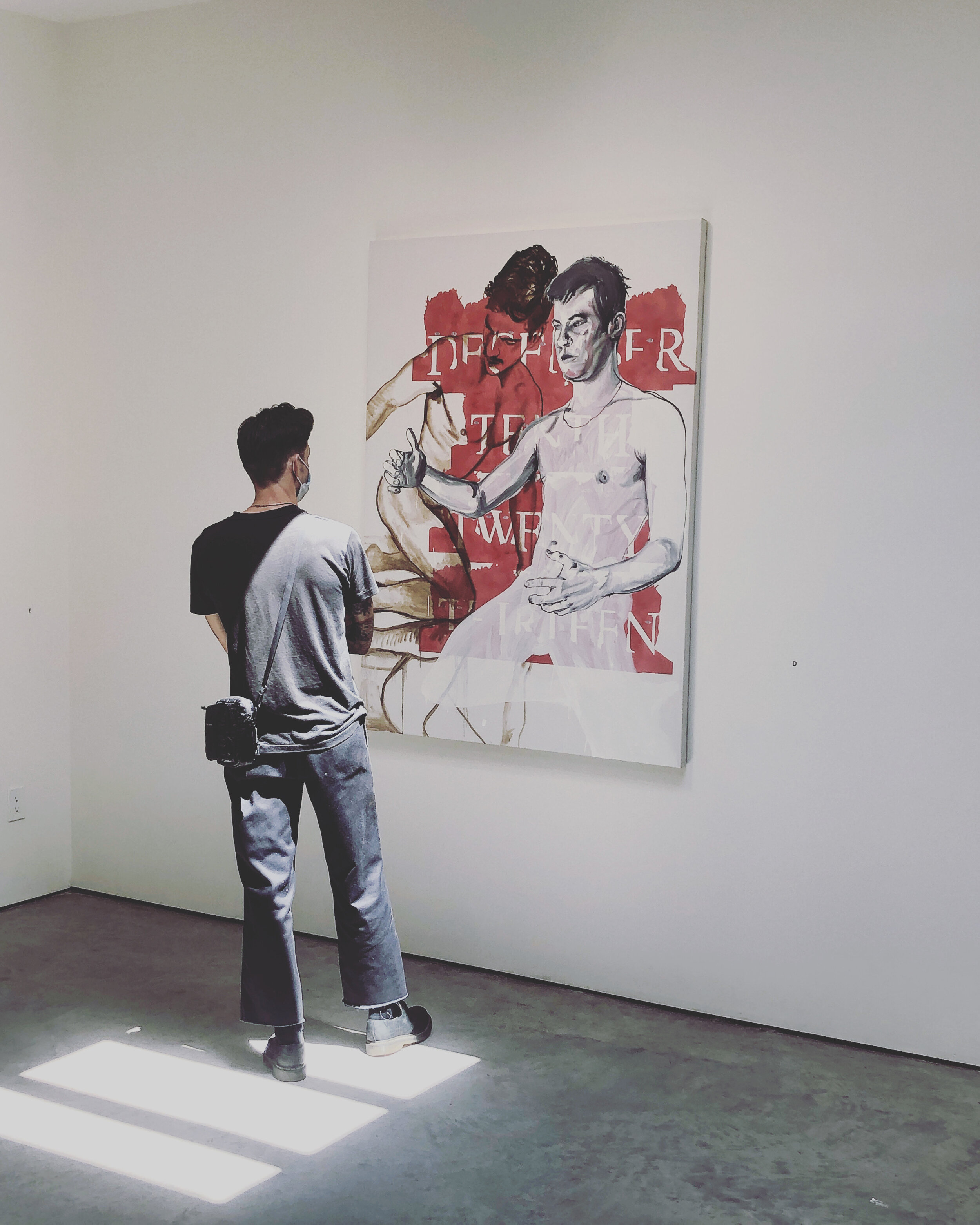
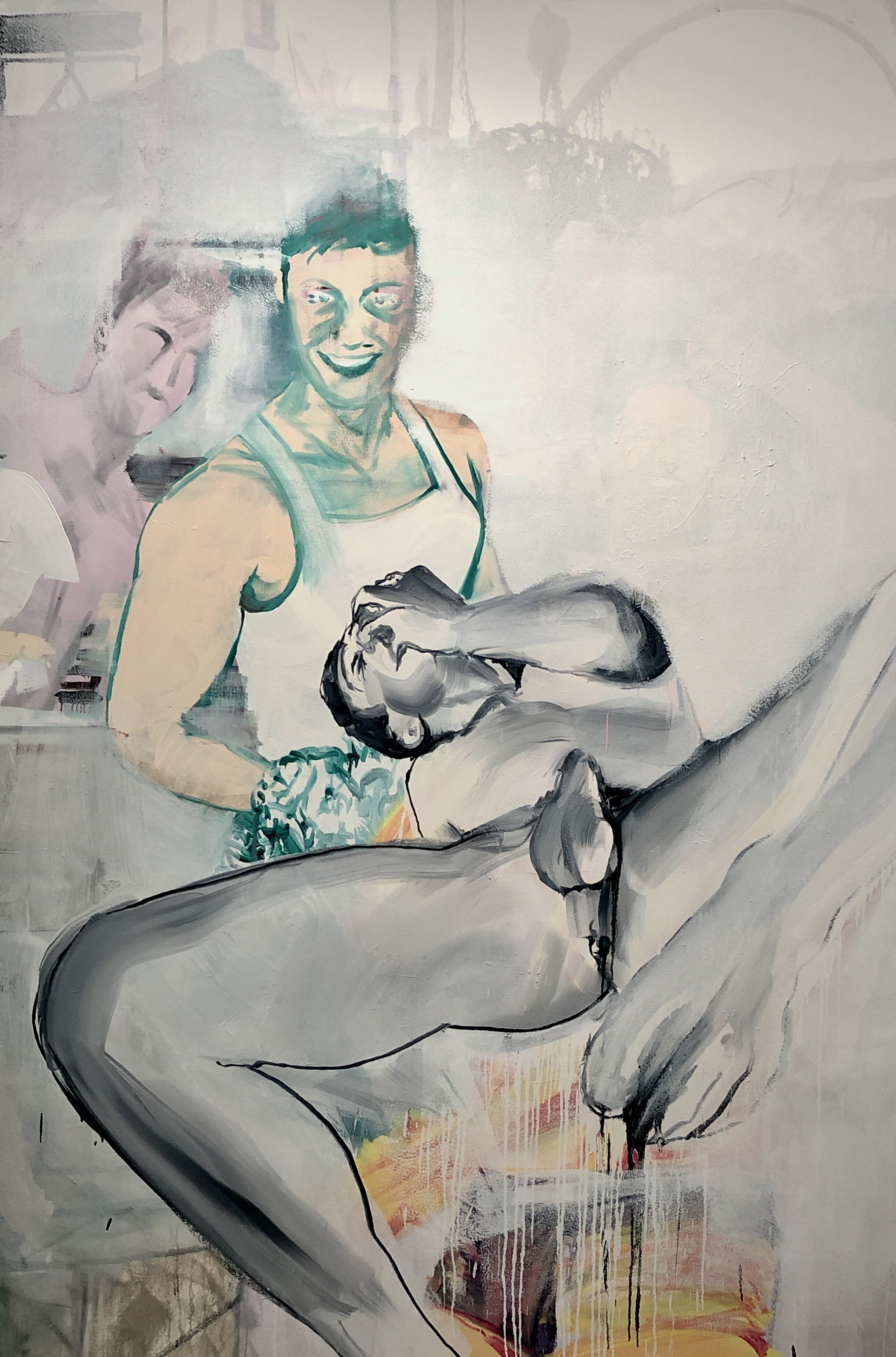
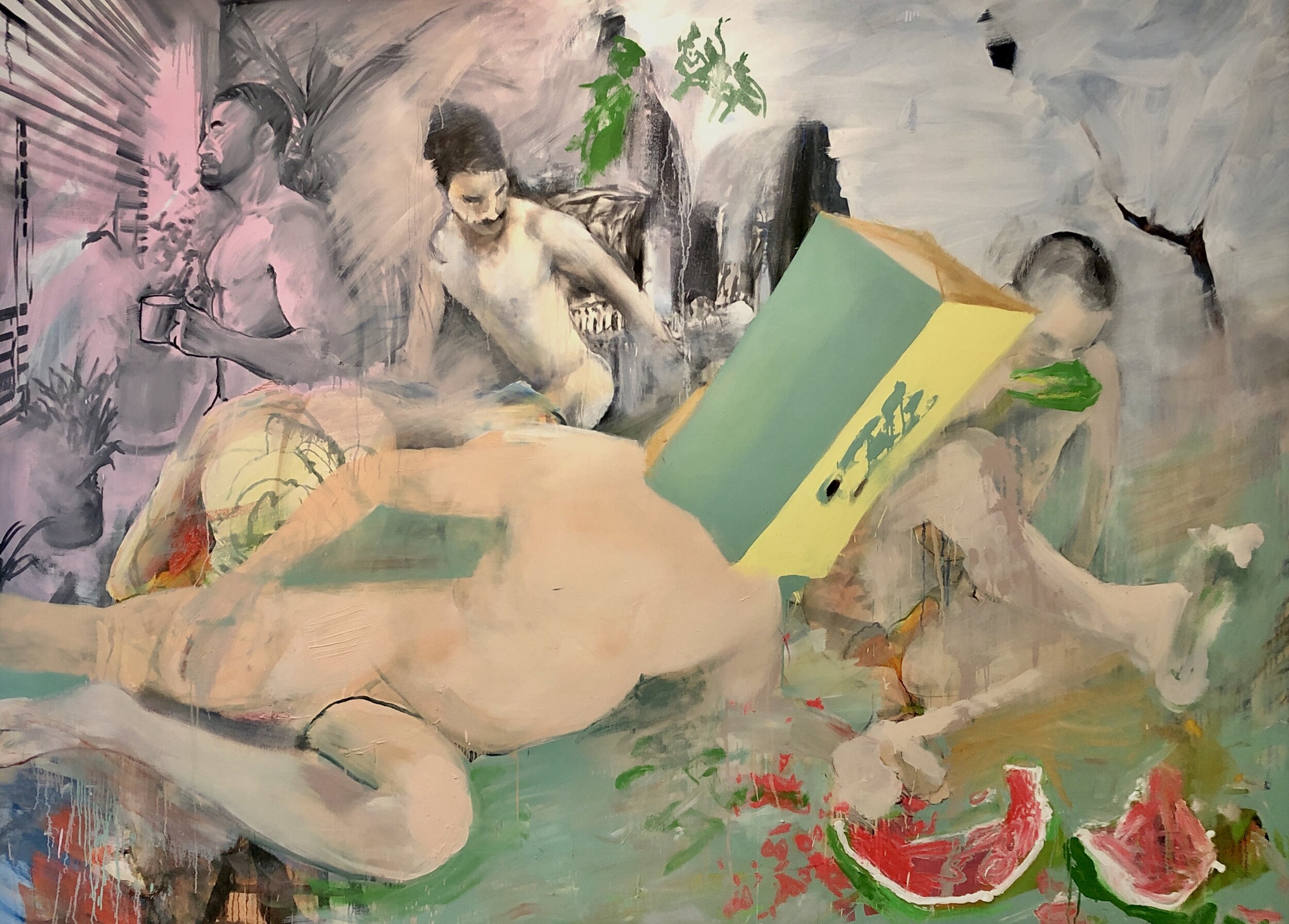
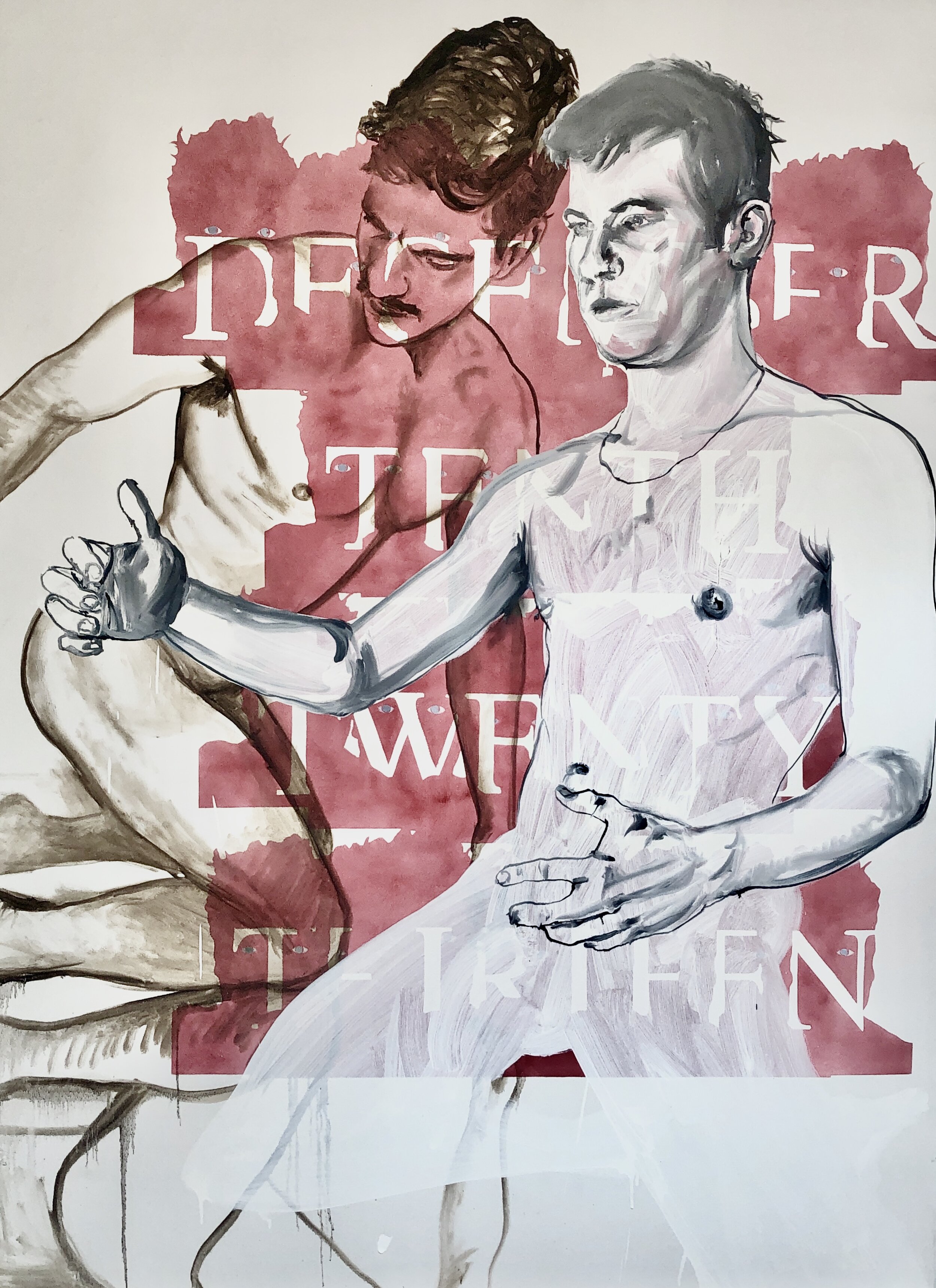
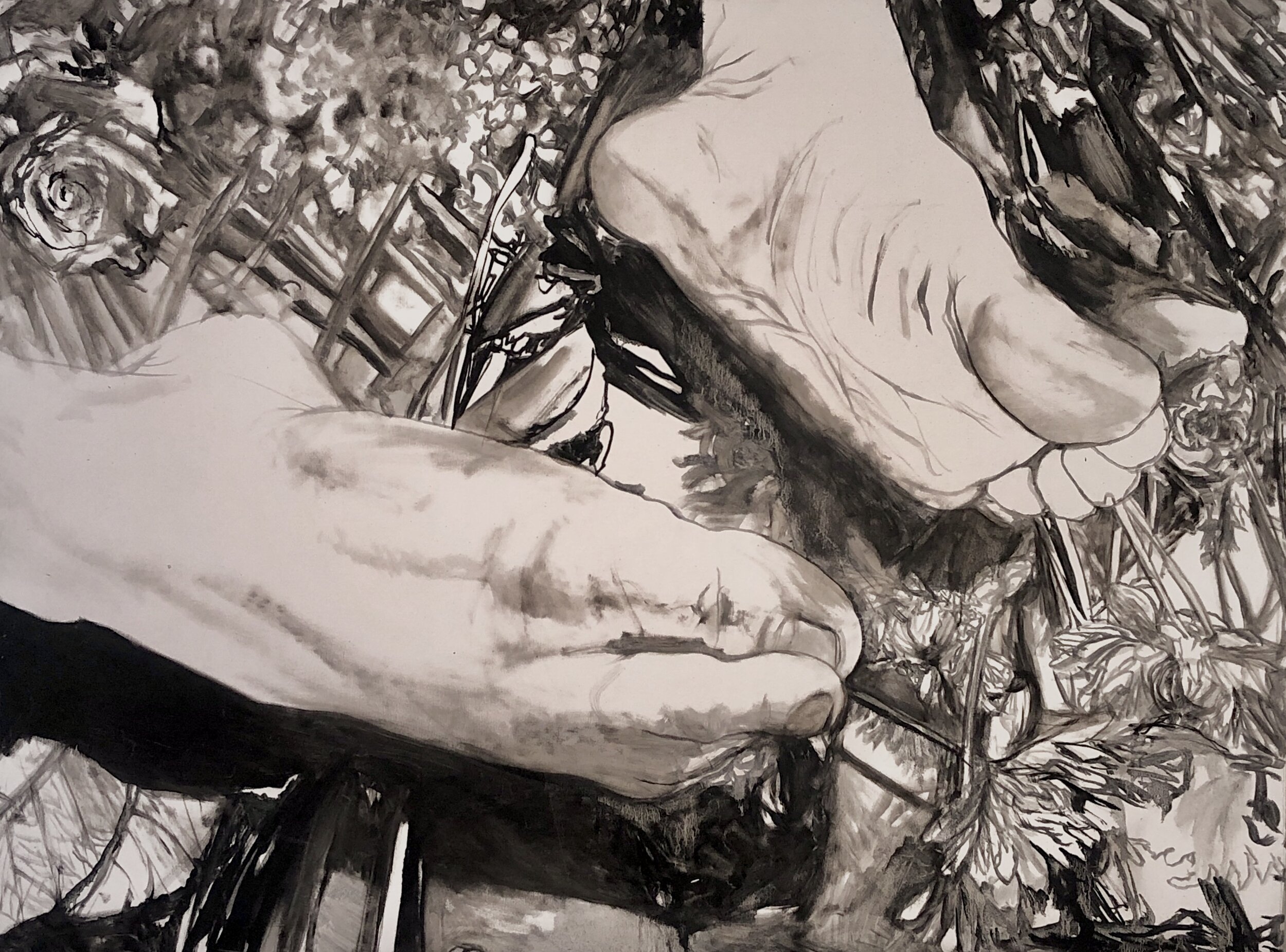
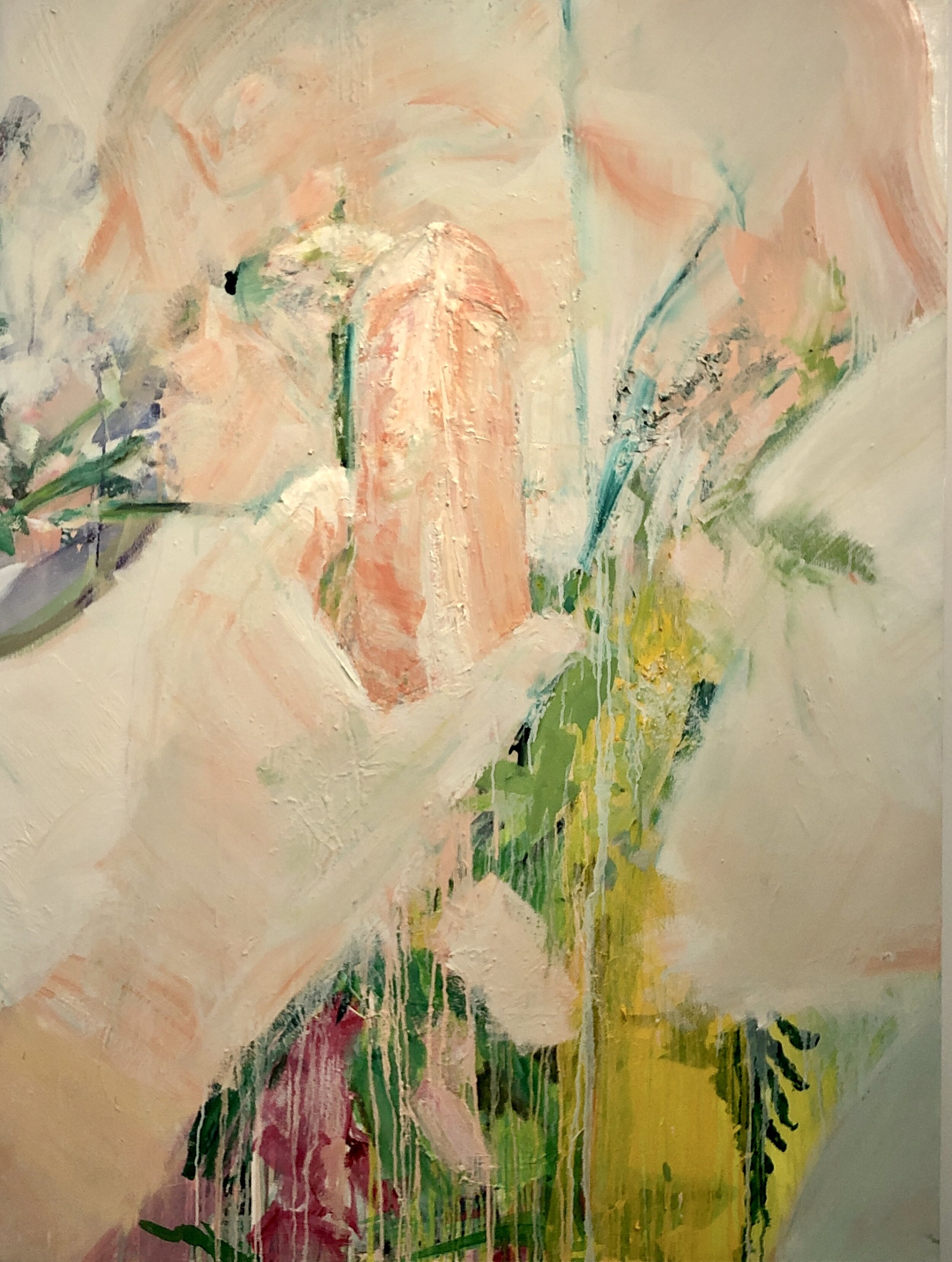
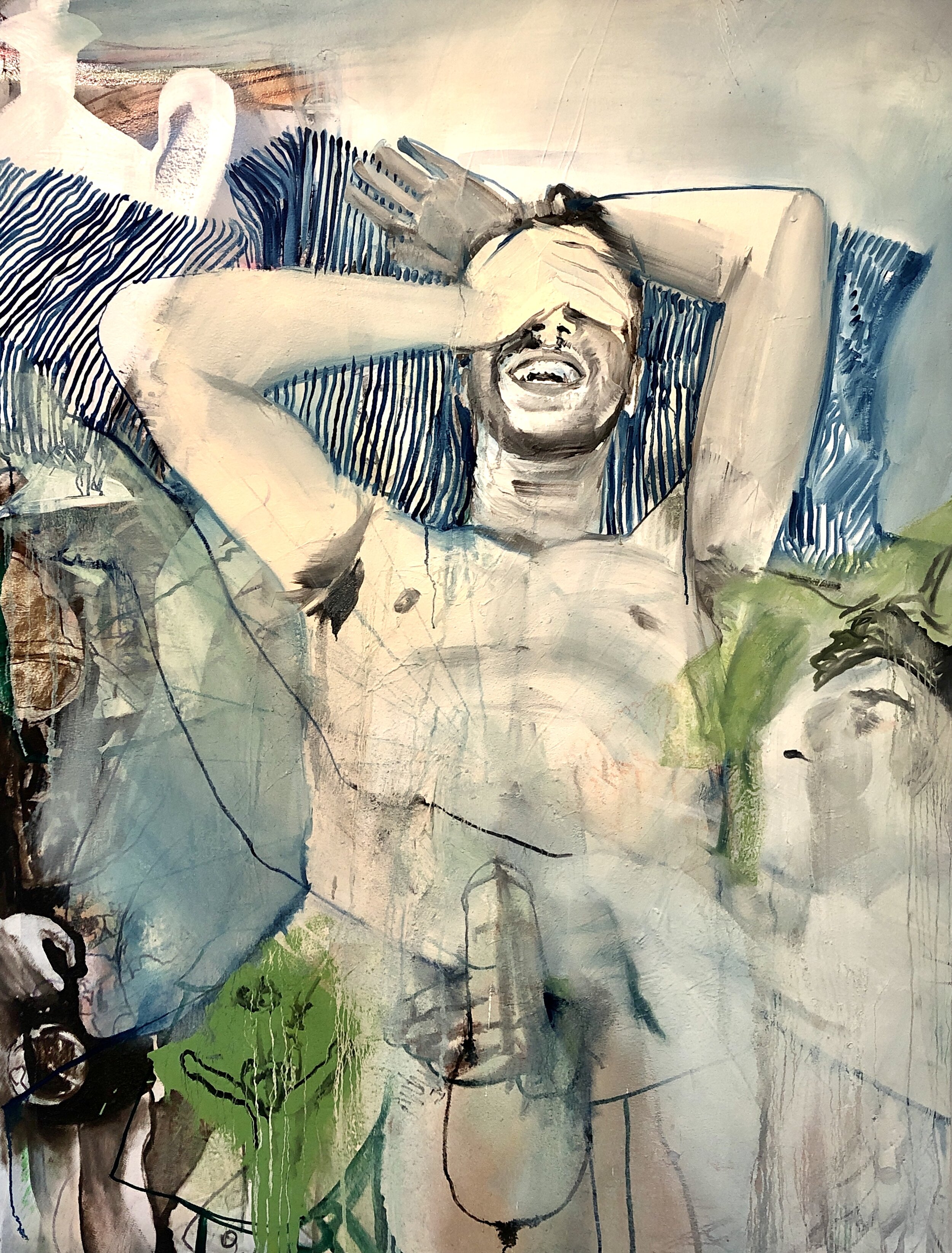


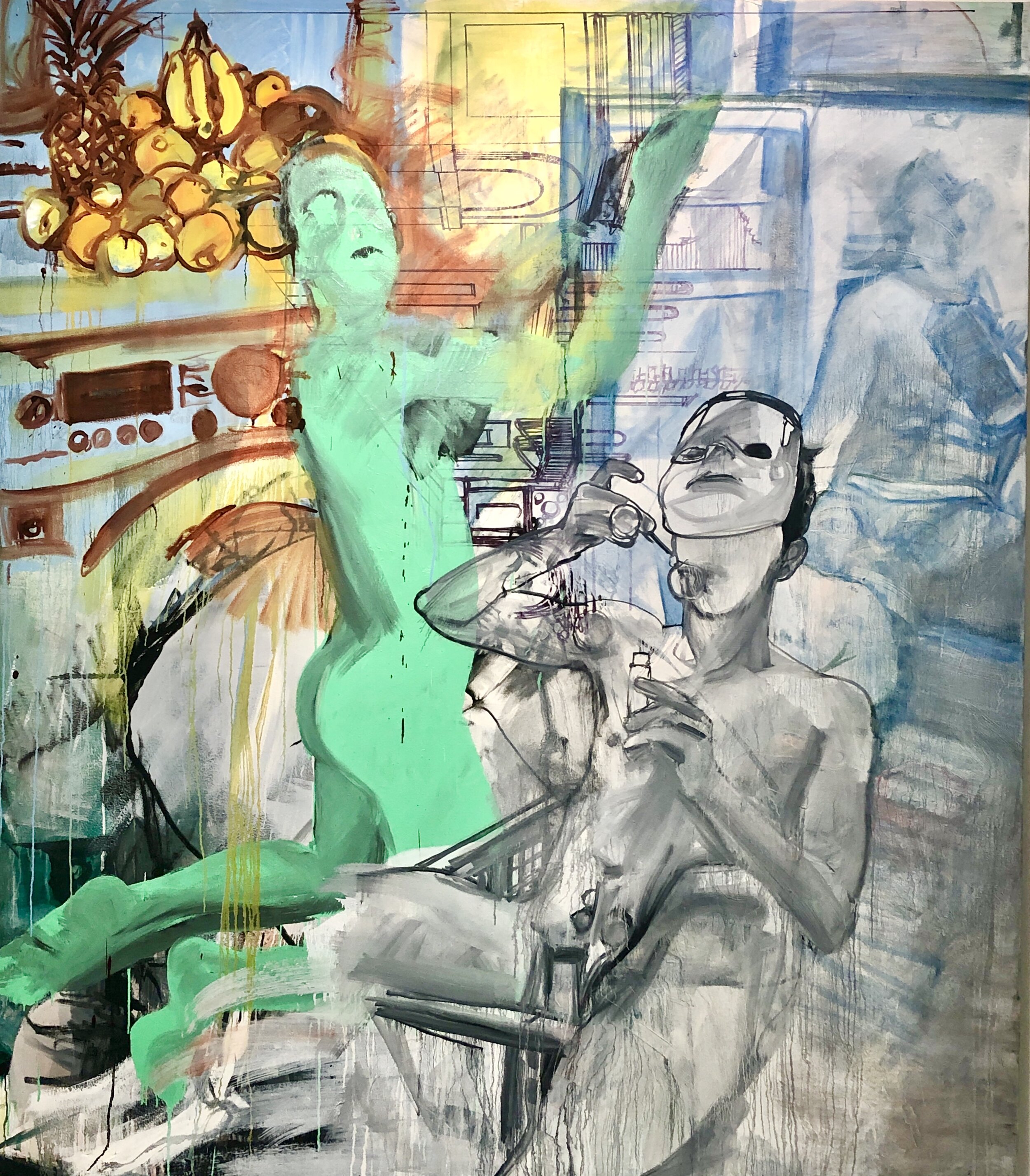

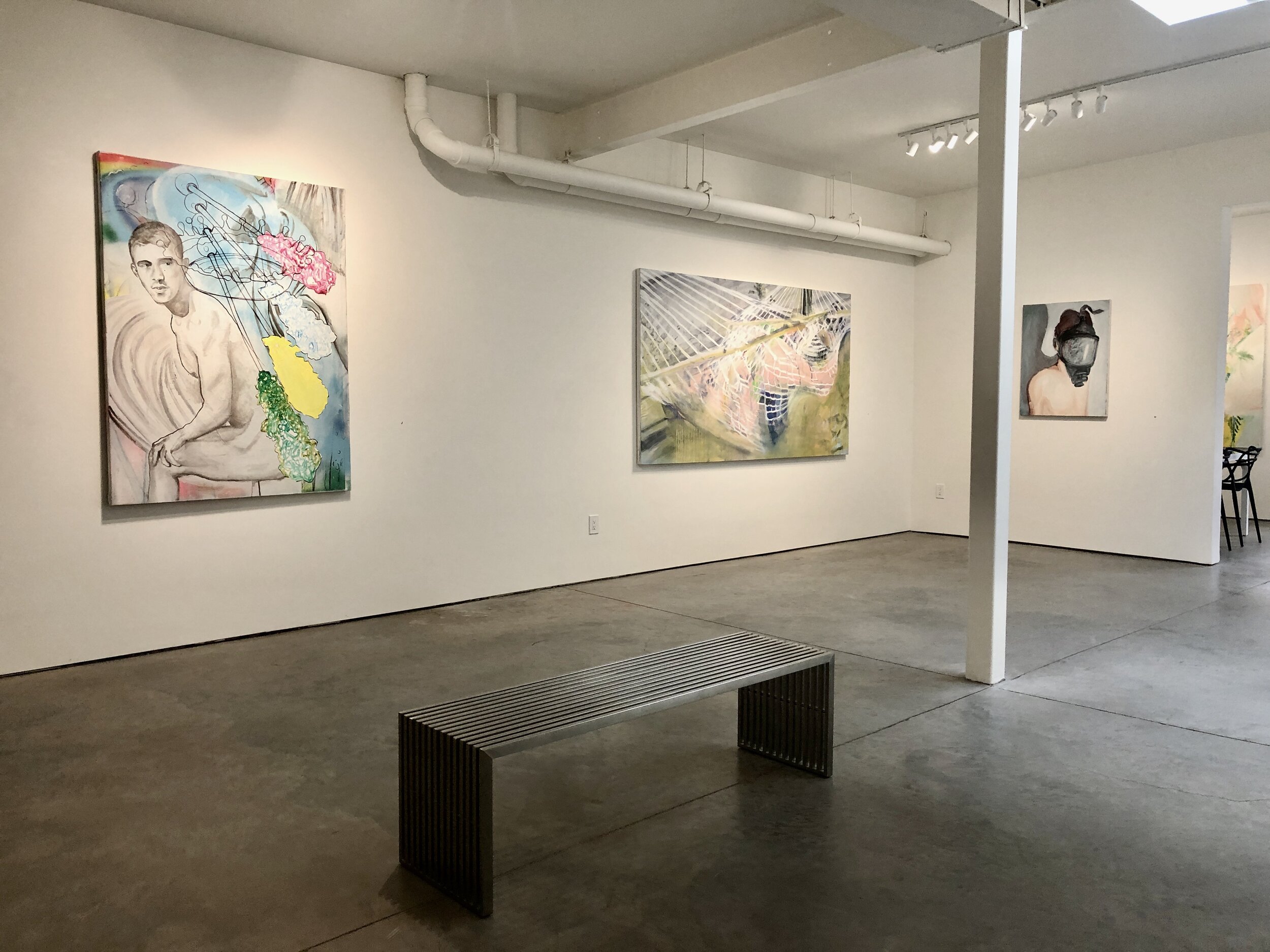
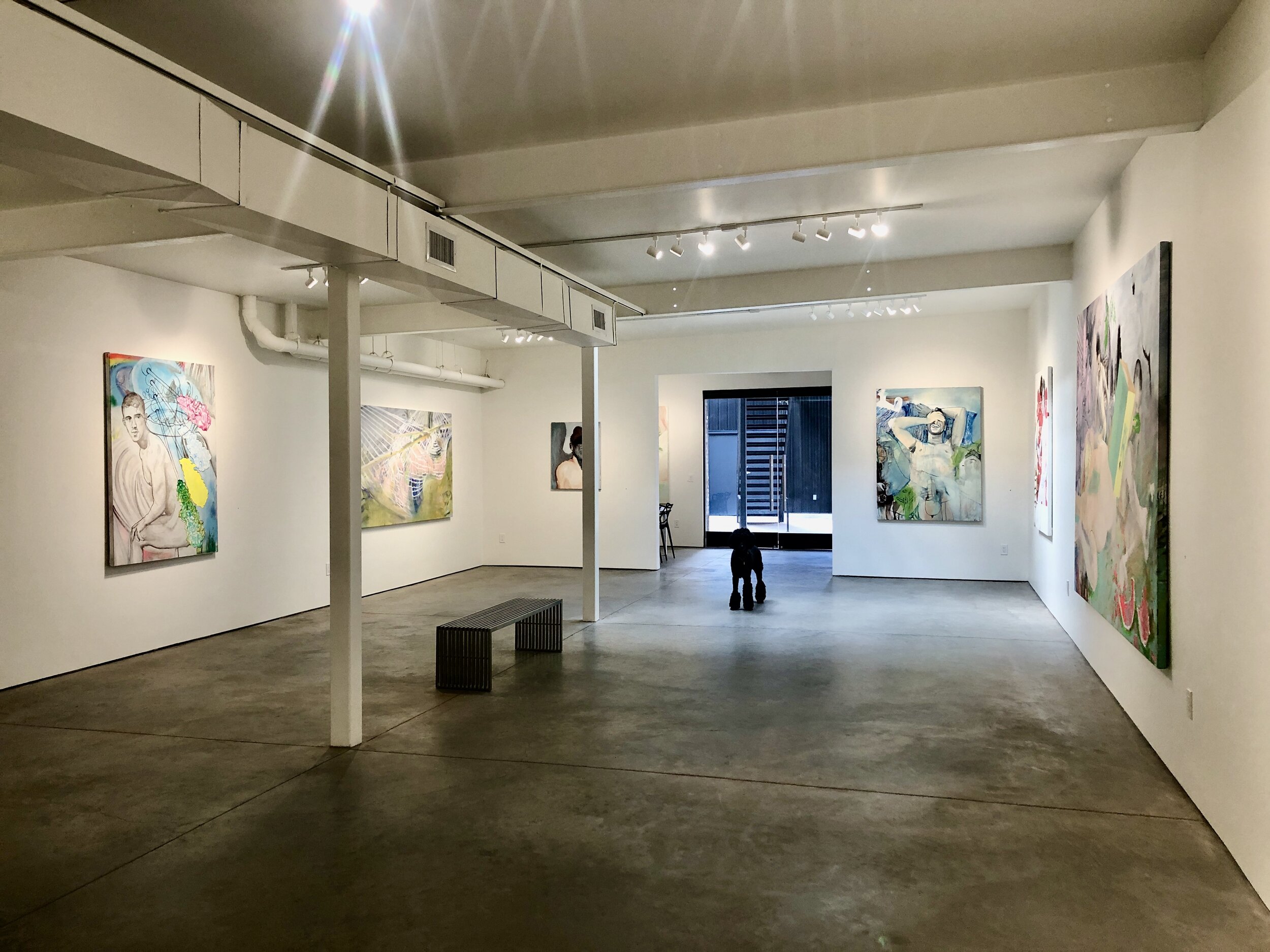
No Fruit Forbidden Alex Schmitz
Quappi Projects is pleased to present Alex Schmitz’s No Fruit Forbidden. A native Kentuckian based in Brooklyn for the last decade, Schmitz's artistic practice includes photography but is primarily focused on painting. The new works in this exhibition explore his personal experience as a gay man and an idealized self within the context of a Candideian garden.
Reached at the end of Voltaire’s Candide (1759), the garden is the culmination of a long and arduous journey. It is a place of respite, albeit one where the characters must do work to achieve results. Not necessarily a dismissal of the pain and suffering that exists in the world outside the garden, Candide’s book-ending assertion “let us cultivate our garden” is perhaps rather an advocation for the creation of a contained universe of one’s own into which one can retreat when necessary. After a youth based in Kentucky tinged with repression and self-hatred, Schmitz began cultivating his own such garden upon moving to Brooklyn a decade ago, acknowledging that recognizing and honoring his own desires was essential to exploring his artistic impulses as well as the development of his personal happiness.
Working from a bank of saved photographs as well as sessions with live models in his live-work studio, Schmitz’s diaristic paintings are pushed and pulled in order to achieve his desired affect, which is a layered hybridization of representation and abstracted, painterly expression. He is drawn to chosen images because of particular formal qualities, but is also very much concerned with gentleness. This conscious choice plays out even in the application of paint. Although the figures in part do refer to specific people, they are not to be understood as individual portraits, but rather amalgams of a collection of friends, lovers, and muses that all play active roles in the artist’s life and in this body of work serve as idealized stand-ins for Schmitz himself.
Schmitz’s work is also in conversation with that of earlier artists who depicted versions and visions of male homosexuality. His figures, contained within complex compositions, are surrounded by multiple viewpoints and often coexist on different planes, calling to mind the work of Larry Rivers (1923-2002). Schmitz’s line work bears some stylistic similarity to the drawings of British artist Keith Vaughn (1912-1977), although much of Vaughn’s work seems possessed with an underlying sense of fear and repression with regard to homosexuality, whereas Schmitz’s is unabashedly celebratory, intimately capturing his subjects when they are ripe, ready, and at their most desirable. Other influences are many, and Schmitz’s work adds to a rich tradition.
In both art as well as in life, frank depictions of queer love or even queer experiences have long been deemed shocking, outré or explicitly political. One might contend that our culture has evolved to such a degree that this is no longer the case, yet it was only this summer - 2020! - that the U.S. Supreme Court ruled (6-3) that workers cannot be fired by employers for being LGBTQ+, and religious organizations are still mostly exempt from abiding by this ruling. While much has improved over the last few decades, every advancement has been met with fierce and powerful opposition and LGBTQ+ citizens have not yet achieved full equality. In that sense, Schmitz’s works, clearly made and imbued with joy and erotic candor, are still radical. Yet his plain, clear-eyed depictions of love, desire, connection and the simple occurrences and pleasures of everyday life are also precisely the opposite. That these two diametric obverses can both simultaneously be true seems to be the point of exalting the lushness of the garden Schmitz has created for himself and his chosen circle. - John Brooks
Alex Schmitz hails from Northern Kentucky and now lives in Brooklyn, New York. He is founder and curator of Taaffe Gallery, an exhibition space adjacent to his Clinton Hill art studio. Alex received his BFA in Painting in 2007 from the University of Louisville, and his MFA from Syracuse University in 2011.
